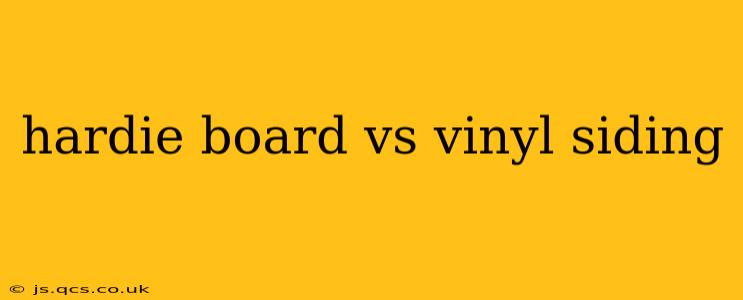Choosing the right siding for your home is a crucial decision impacting aesthetics, durability, and long-term value. Two popular contenders consistently top the list: Hardie board (fiber cement) and vinyl siding. This in-depth comparison will help you weigh the pros and cons of each, ultimately guiding you towards the best choice for your needs and budget.
What is Hardie Board Siding?
Hardie board, manufactured by James Hardie, is a type of fiber cement siding. It's composed of cement, cellulose fibers, and sand, creating a durable and robust material. Known for its resilience against harsh weather conditions, fire, and insects, Hardie board offers a long lifespan and significant protection for your home. Its textured surface provides a realistic wood-like appearance, available in various colors and styles to complement any architectural design.
What is Vinyl Siding?
Vinyl siding is a popular choice due to its affordability and ease of installation. Made from polyvinyl chloride (PVC), it’s lightweight, water-resistant, and requires minimal maintenance. Vinyl comes in a wide array of colors and styles, mimicking the look of wood, brick, or stone. Its low cost and simple installation make it an attractive option for budget-conscious homeowners.
Hardie Board vs. Vinyl Siding: Key Differences
Here's a head-to-head comparison focusing on the key aspects homeowners consider:
Durability and Lifespan
- Hardie Board: Boasts exceptional durability. Resistant to impact, fire, rot, and insects, it can last 50 years or more with proper maintenance.
- Vinyl Siding: While relatively durable, vinyl can be susceptible to damage from strong impacts, extreme temperatures, and UV exposure, potentially leading to cracking, fading, or warping. Its lifespan generally ranges from 20 to 40 years.
Maintenance
- Hardie Board: Requires minimal maintenance. Occasional cleaning with a pressure washer is usually sufficient. However, it may require repainting every 10-15 years to maintain its color and protection.
- Vinyl Siding: Very low maintenance. Generally requires only occasional rinsing with a hose to remove dirt and debris.
Cost
- Hardie Board: Significantly more expensive than vinyl siding, reflecting its superior durability and performance.
- Vinyl Siding: The most budget-friendly option, making it appealing for those working with tighter budgets.
Appearance and Style
- Hardie Board: Offers a premium look and feel, often mimicking the texture and appearance of natural wood. Its thicker profile provides a more substantial and elegant appearance.
- Vinyl Siding: Available in a vast array of colors and styles. However, some may find its appearance less realistic compared to Hardie board, especially at close range.
Installation
- Hardie Board: More complex and time-consuming to install, requiring skilled labor.
- Vinyl Siding: Relatively easy to install, often making it a faster and more cost-effective option for labor.
Insurance Benefits
- Hardie Board: Often qualifies for insurance discounts due to its superior fire resistance and durability.
- Vinyl Siding: Usually does not offer significant insurance discounts.
Frequently Asked Questions (FAQ)
Which is better for hurricane-prone areas?
Hardie board's superior impact resistance and wind-resistance make it a far better choice for areas prone to hurricanes. Vinyl siding can be easily damaged by high winds and debris.
Which is more environmentally friendly?
Both options have environmental impacts. Vinyl is a petroleum-based product, while Hardie board uses natural materials but requires energy-intensive manufacturing. Consider the entire life cycle and choose the option that best suits your environmental priorities.
Can I paint Hardie board siding?
Yes, Hardie board can be painted, allowing for greater customization and color options. It's essential to use paints specifically designed for fiber cement siding.
Is vinyl siding recyclable?
Some vinyl siding can be recycled, but the process is not widely available. Check with local recycling facilities for details.
Which siding offers better insulation?
Neither Hardie board nor vinyl siding provides significant insulation. Consider adding insulation underneath the siding to improve energy efficiency.
Conclusion
The choice between Hardie board and vinyl siding depends heavily on individual priorities. Hardie board provides unparalleled durability and longevity, justifying its higher initial cost through long-term savings and reduced maintenance. Vinyl siding offers a budget-friendly and low-maintenance option, particularly suitable for homeowners seeking a more economical solution. Weigh the factors discussed above carefully, considering your budget, climate, aesthetic preferences, and long-term goals to make the best decision for your home.
